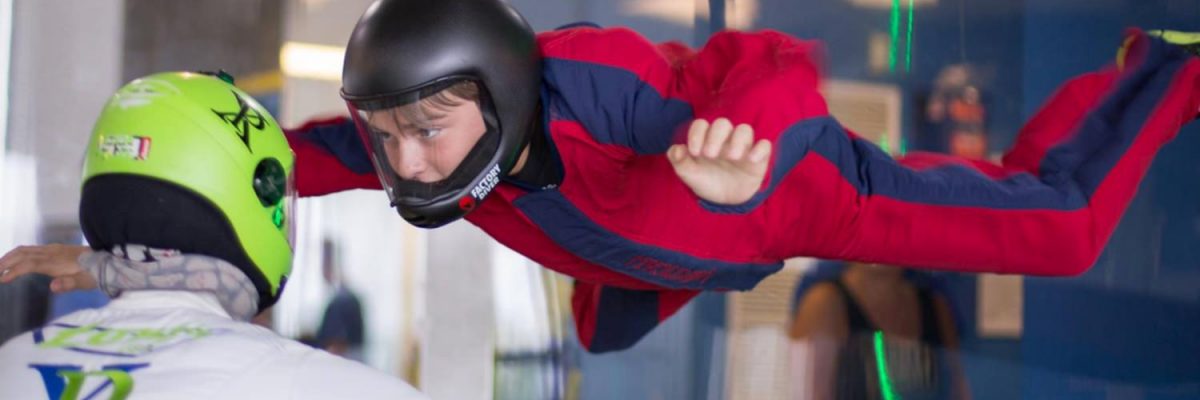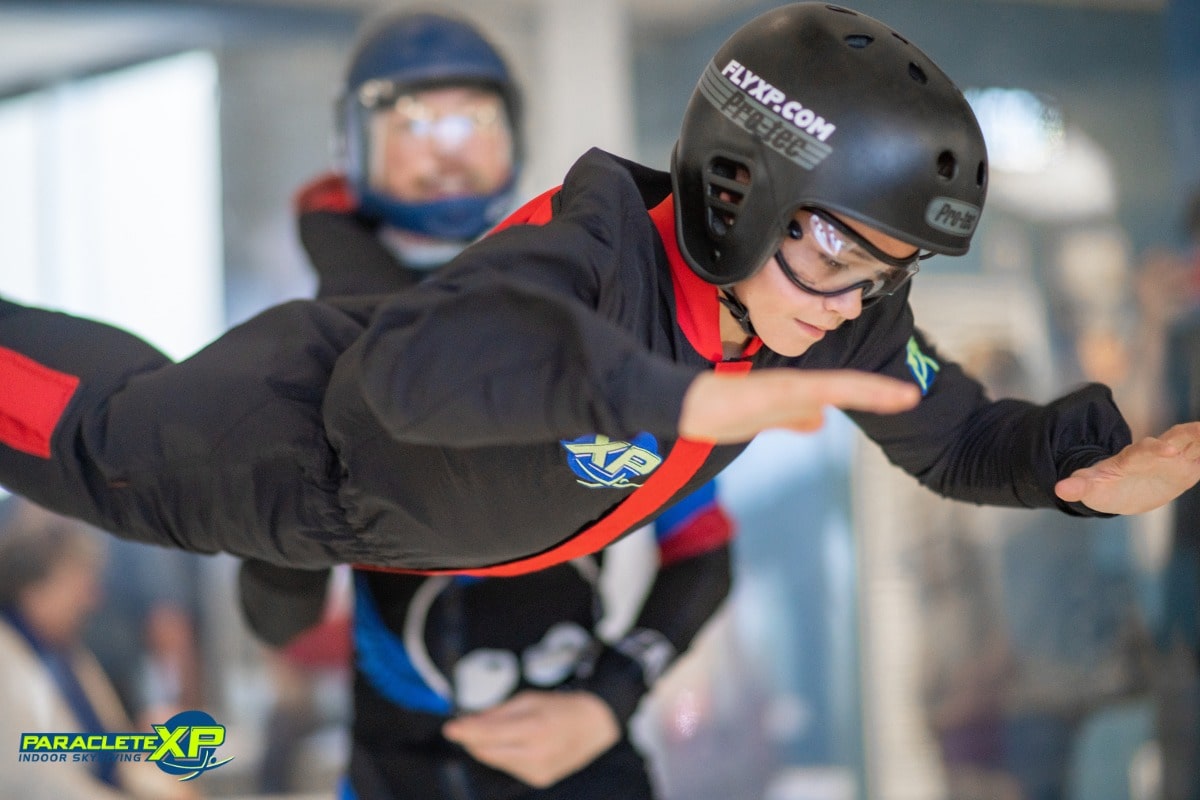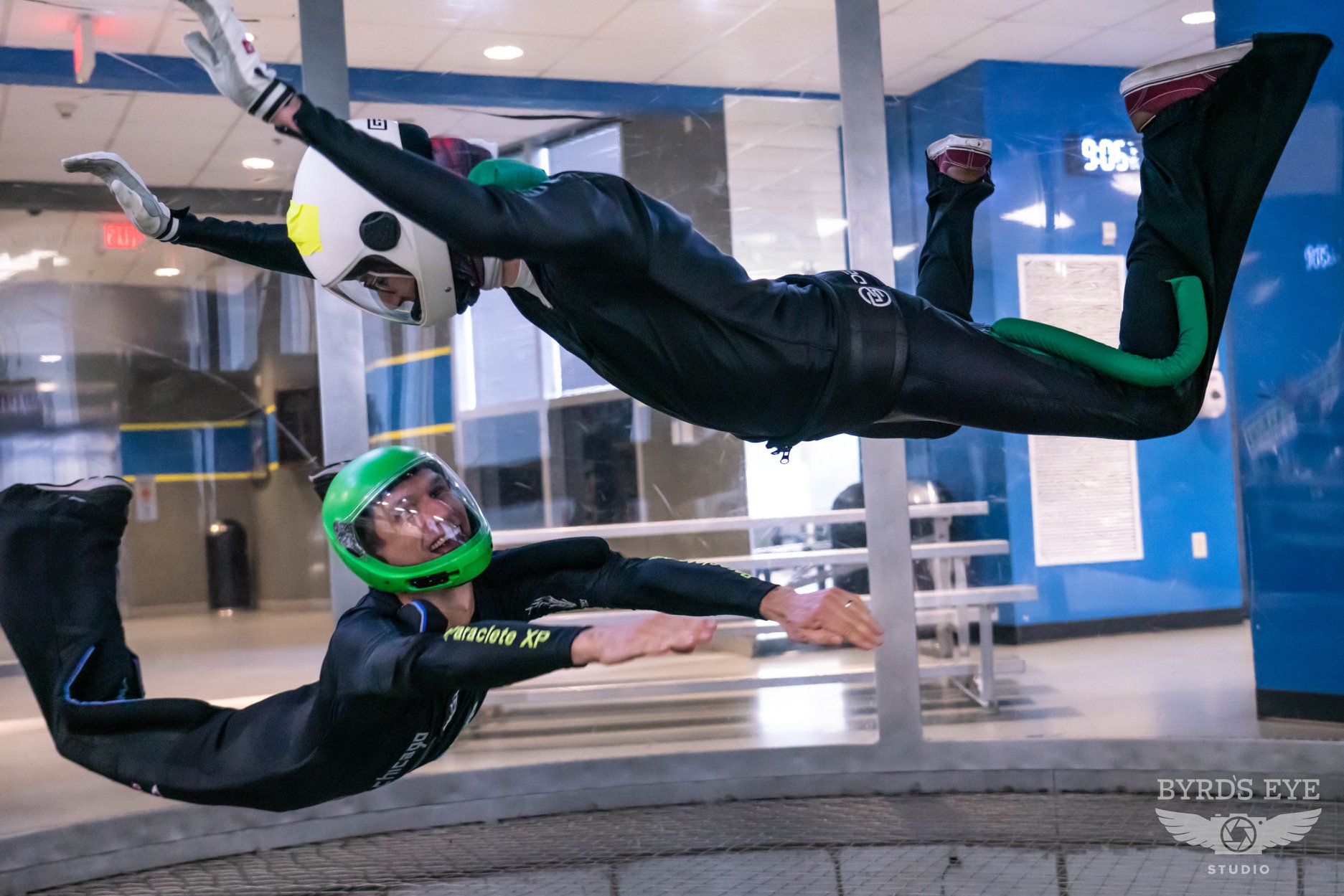
How To Indoor Skydive
Tuesday, January 9, 2024
- Team XP
- 1/09/24
- 0
- Indoor Skydiving
How hard is indoor skydiving? While we make it look easy, it’s much more involved than it probably seems at first glance!
If you’ve ever stuck your hand out of a car window going 65+ mph, you’ve already experienced the sensations of bodyflight. Now, imagine what it would feel like having your entire body on that bed of wind, actually … double the wind speed. It can be a funky feeling at first when you’re trying to stabilize but once you get the hang of it, you’ll start to experiment how your body reacts to even the slightest bit of movement against the wind – and it’s super cool!
Here’s how to indoor skydive along with some insider indoor skydiving tips and tricks to improve your flight and overall indoor skydiving experience.

How to Indoor Skydive
How is indoor skydiving done? Our beginner’s guide to indoor skydiving will give you a sense of the basic skills of bodyflight – sure to prove useful when you fly for the first time!
Step 1: Entering the Wind Tunnel
The first step to bodyflight is getting in the tunnel, which may be a little tricky at first. The wind tunnel is a skydiving simulator that pushes air in a recirculating motion through a flight chamber. As you wait for your turn, you will sit on the designated bench located just outside the tunnel within the flight chamber. Your instructor will signal for you to approach the door of the tunnel, ask you to fold your arms across your body, and then take hold of you as you gently lower yourself into the wind, belly first! Don’t worry, this process will all be covered in your pre-flight class.
Step 2: Stabilizing Your Body for Flight!
At first, your instructor will support you in the wind as you adjust your body position in order to fly stable on your own.
To achieve a stable bodyflight position, you will arch by pushing your hips forward (rather than arching your back), keeping your chin up, and pointing your toes upwards. The goal is to keep the center of mass at your core, while allowing your limbs to flow freely in order to direct your movement.
As you attempt to stabilize, your instructor will remind you of the helpful hand signals you learned in your pre-flight class that help you make adjustments to your body position. Most people take a few turns in the tunnel before they reach stability. Be patient with yourself, achieving a stable bodyflight position may take longer than expected and that’s okay, everyone learns at their own pace!
Step 3: Turning Left and Right
Once you’ve achieved a stable body position, your instructor may take you to the next level of bodyflight: performing turns! The basic principles of bodyflight are rooted in aerodynamics, which is how we are able to control our bodies in flight. We have figured out how to displace the air pressure as it hits our body, in order to move our bodies in a certain way.
When performing a turn from the belly position, you’ll simply dip the shoulder and arm slightly on the side that you want to turn toward – so if you want to turn right, you’ll dip your right arm and vice versa for a left turn. This is a basic belly turn, but more advanced indoor skydivers will use a combination of legs, arm, and even their chest to make precise bodyflight maneuvers. As always, follow the direction of your flight instructor in order to achieve the best possible outcome.

Step 4: Moving Forwards and Backwards
Using these same air displacement principles, you can achieve forward and backward movements by simply changing the position of your arms and legs. It’s the opposite of what you would think the right movement would be outside of the tunnel. If you want to go forward, you’ll bring your arms closer to your chest and straighten your legs. To go backward, you’d bend your legs towards your buttocks and straighten your arms out forward.
Step 5: Flying Up and Down
The final step to learning the basics of bodyflight is to learn how to change your fall rate in order to go up and down in the wind tunnel. This is all about surface area. If you want to go down (increase your fall rate), you’ll make yourself smaller by arching even more, bringing your arms in, and keeping your chin up. To go up (decrease your fall rate), you’ll make yourself bigger by relaxing the hips, and stretching your limbs out as big as you can.
Indoor Skydiving Tips
- Book a reservation ahead of time. There’s nothing worse than working up the courage to fly just to be told we’re all booked up and there is nothing available! The best way to prevent this disappointment from happening is by booking a reservation ahead of time and arriving 45 minutes before your scheduled flight time. Trust us, you’ll be glad you did!
- Come dressed for success. Wear comfortable clothes that are easy to move in and close-toed sneakers that can be laced up tightly. What to wear for indoor skydiving is crucial for ultimate enjoyment which also includes tying your hair or beard in a way that prevents it from getting windblown into thousands of tiny knots. Ouch!
- Listen to your instructor’s guidance. The instructors at Paraclete XP are not just crazed adrenaline junkies, they are certified bodyflight professionals who have years of experience. We recommend paying attention to their advice inside and outside of the tunnel to get the most out of your experience. We won’t ever steer you wrong!
- Remember to breathe. Take slow, controlled breaths in through your nose and push out through your mouth.
- Chin up! Keeping your chin up helps to remind you to assume the proper bodyflight position and it helps you breathe better. Plus, we all want to see your smiling face – say cheese!
- Try your best to relax. We know, easier said than done. But really, relaxed bodies do best when flying for the first time. Allow the wind to push you up rather than fighting against it. Take a deep breath every now and then to help relax your muscles. You got this!
All sounds cool right, but is indoor skydiving actually fun? Heck yeah! But don’t just take it from us, find out for yourself by booking a flight with the biggest, baddest wind tunnel in the US, Paraclete XP!
Tags: indoor skydiving tips

We have been twice now and absolutely love it and are already planning our next family flight! Andy, Derek, and all of the staff have been amazing. They are excellent with both kids and adults, and our 4 year old daughter can't get enough! The facility is top notch, and they ensure you have a safe and REALLY fun time. You can tell everyone loves what they do, and it more than their job - it is their passion. I would HIGHLY recommend this for kids and families, and they even offer birthday party packages.
Bobbie Jean Fraley
Copyright © 2025, Paraclete XP Indoor Skydiving, All Rights Reserved.
DropZone Web Design & Marketing by Beyond Marketing, LLC